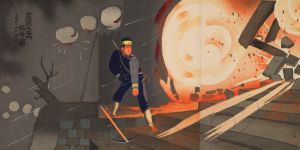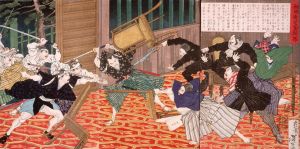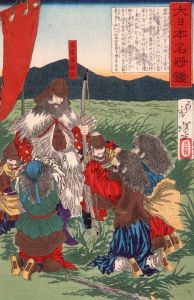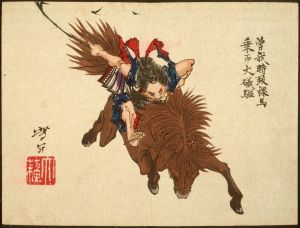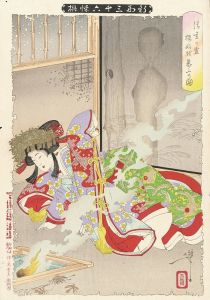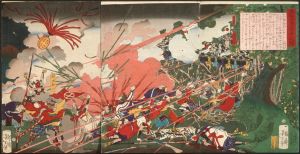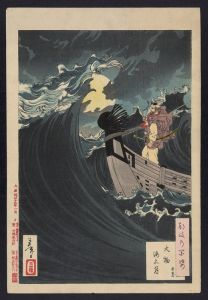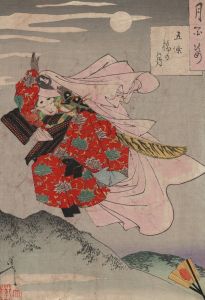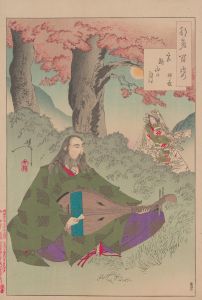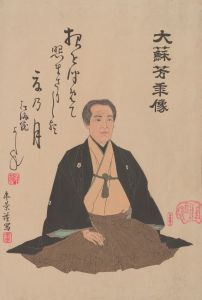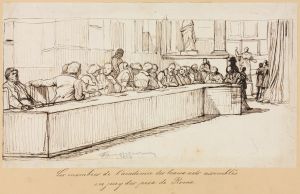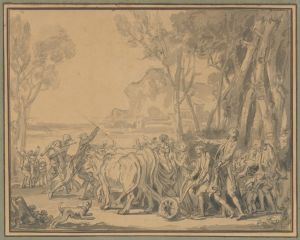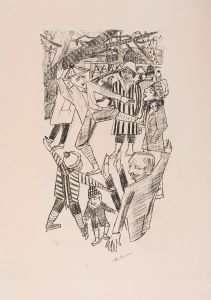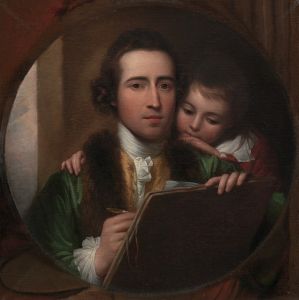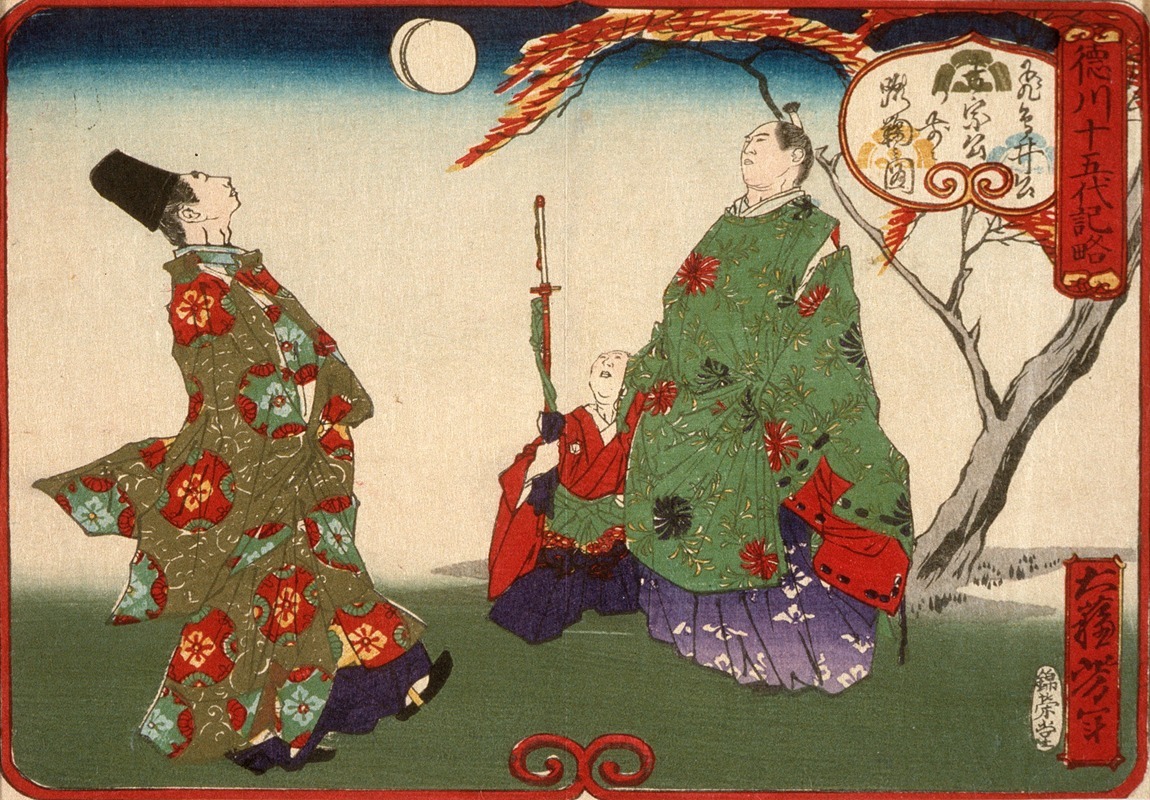
Asukai Masanori Teaching Tokugawa Yoshimune to Play Kemari
A hand-painted replica of Tsukioka Yoshitoshi’s masterpiece Asukai Masanori Teaching Tokugawa Yoshimune to Play Kemari, meticulously crafted by professional artists to capture the true essence of the original. Each piece is created with museum-quality canvas and rare mineral pigments, carefully painted by experienced artists with delicate brushstrokes and rich, layered colors to perfectly recreate the texture of the original artwork. Unlike machine-printed reproductions, this hand-painted version brings the painting to life, infused with the artist’s emotions and skill in every stroke. Whether for personal collection or home decoration, it instantly elevates the artistic atmosphere of any space.
Tsukioka Yoshitoshi (1839-1892) was a prominent Japanese ukiyo-e artist, known for his innovative and dramatic woodblock prints. One of his notable works is "Asukai Masanori Teaching Tokugawa Yoshimune to Play Kemari." This artwork is part of Yoshitoshi's series "New Forms of Thirty-Six Ghosts" (Shinkei Sanjūrokkaisen), which was published between 1889 and 1892. The series features supernatural themes and historical figures, blending traditional Japanese folklore with Yoshitoshi's unique artistic style.
The print depicts a historical scene involving Asukai Masanori, a renowned kemari player, and Tokugawa Yoshimune, the eighth shogun of the Tokugawa dynasty. Kemari is a traditional Japanese ball game that dates back to the Heian period (794-1185). It is a non-competitive sport where players work together to keep a deerskin ball in the air without letting it touch the ground. The game is often associated with the aristocracy and was considered a refined and elegant pastime.
Asukai Masanori (1578-1650) was a member of the Asukai family, who were famous for their expertise in kemari. The Asukai family served as instructors of the game to the imperial court and other high-ranking officials. Masanori's skills and knowledge of kemari were highly regarded, and he played a significant role in preserving and promoting the game during his lifetime.
Tokugawa Yoshimune (1684-1751) was the eighth shogun of the Tokugawa shogunate, ruling from 1716 to 1745. He is known for his efforts to reform and strengthen the shogunate's administration, as well as for his interest in various cultural and intellectual pursuits. Yoshimune's reign was marked by a revival of traditional Japanese arts and practices, including kemari.
In Yoshitoshi's print, Asukai Masanori is shown instructing Tokugawa Yoshimune in the art of kemari. The scene captures a moment of cultural transmission and highlights the importance of preserving traditional practices. Yoshitoshi's attention to detail and his ability to convey the elegance and grace of kemari are evident in the composition. The figures are depicted in traditional attire, with Yoshimune dressed in the formal robes of a shogun and Masanori in the attire of a kemari master.
Yoshitoshi's "Asukai Masanori Teaching Tokugawa Yoshimune to Play Kemari" is a testament to the artist's skill in blending historical and cultural themes with his distinctive artistic vision. The print not only showcases the historical significance of kemari but also reflects the broader cultural revival that took place during Yoshimune's reign. Through this work, Yoshitoshi pays homage to the enduring legacy of traditional Japanese arts and the individuals who dedicated their lives to preserving them.





